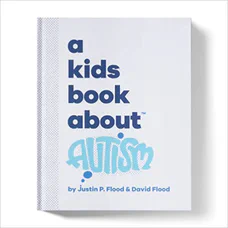A Kids Book About Autism

Recommended Age Range: 2nd grade through 6th grade.
Publisher's Summary:
Autism Spectrum Disorder is something that affects so many kids and families all over the world. This book can kickstart the journey to better understanding autism and those who live with it. It dives into the struggles and what it’s like to live with autism while reminding us that at the core, we’re not that different from each other after all.

Dr. Annie's Takeaways
Recommended for: This book is written by an autistic young adult and his father and describes the challenges of autism, as well as what they love about it. It is a good read for the allistic (i.e., non-autistic) siblings or friends of autistic children, as well as for autistic children who might relate to Justin (i.e., shared challenges, shared interests). It validates the challenges of autism but ultimately ends on a positive, inclusive note.
Would a child like it? Children who relate to Justin or who love someone who is autistic may find this book validating. It’s an informational text without pictures, which may make it less engaging for some readers.
Evidence-Based Practices:
Psychoeducation
Tone: Loving, authentic
Story Quality: This story is written by Justin Flood, who is an autistic young adult, and his father David. The pair describe what it’s like for Justin to be autistic, including what they love about it and what’s challenging. The book feels authentic and realistic. I wish the descriptions of the positive aspects of autism were a little more descriptive; they feel a bit generic and perhaps a smidge patronizing.
Illustrations: There aren’t any illustrations. The book uses changes in font style, size, color, and formatting to contribute to the meaning of the text.
Representation: Justin is autistic; his father is not. Justin is described as “a kid who won’t stop talking.” He has sensory sensitivities and challenges making friends. Justin likes movies, video games, anime, old cartoons, favorite foods like ice cream and pizza, trains, swimming, and meeting new people.
Psychological Practices: This book defines the term developmental disability and explains the concept of autism being a spectrum with a lot of variation by using a color wheel. It names challenges that some autistic kids experience, including difficulties with language, learning, attention, and making friends. Justin shares that he gets very anxious when he tries to make friends and often feels left out because people don’t understand him. He also shares how distressing it is for him to be interrupted when he’s focused on something, how he experiences sound sensitivity (“everything can sound so loud”) and sensory overwhelm, and that it feels “scary” to look people in the eye. The book encourages the reader to think about what it would feel for them to experience these things. Justin’s dad describes positive aspects of autism. He says that “[people with autism] are smart…caring…compassionate…loving…and they like a lot of the same things you do!” The book ends by encouraging the reader to slow down so they don’t leave behind someone who is autistic.
Concerns: This book uses person-first language (i.e., person with autism), which is generally less preferred by the autism community than identity-first language (i.e., autistic person). Some people prefer person-first language, however, and it’s a personal choice. Since Justin and his father wrote this book together, I will defer to their decision to use person-first language. The ending recommendation about slowing down is useful and important in many ways, but in some other ways the non-autistic people in an autistic person’s life also need to try to catch up! I’m afraid the recommendation to slow down so as not to leave behind an autistic person could run the risk of being a bit insulting, even though the intention of the recommendation is to be inclusive.
Buy This Book:
Amazon
